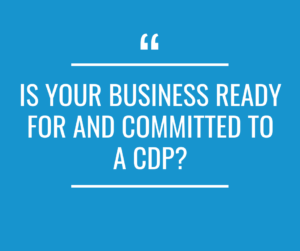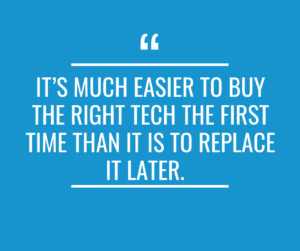Is Your Organization Ready for a Customer Data Platform?
February 4, 2019Data-driven marketing is proven to increase engagement and sales. But before you commit to a CDP, it’s important to assess your organizational readiness.
Data-driven marketing is vital in today’s economy. Or so say 64 percent of marketing executives.
So, it may come as no surprise to learn that Customer Data Platforms and data-driven marketing strategies are growing – and fast.
And while speed is important in an always-changing industry with customer expectations that keep on rising, it’s also vital that we put strategy before tech. Because it isn’t just new technology that makes a company data-driven. It’s also about the people, processes and strategy behind the scenes.
In fact, in a recent panel discussion, some of tech’s biggest names agreed that the biggest challenge to MarTech success is people and process.
So, before you tackle the technology side of becoming data-driven, we think it’s important to assess your organizational readiness. Is your business ready for and committed to a CDP? Here are three questions to help you figure it out.

1. Have You Identified Your Goals?
Every tech platform on the market, including CDPs, is a tool meant to help you achieve real business goals. This means you need to know what those goals are and make a plan for reaching them before you choose and implement a CDP.
If your goal is to identify the content each user responds best to, you’ll need a CDP with a content affinity feature. If personalization at scale, like that demonstrated by Netflix or Spotify, is your ultimate goal, you’ll want to look at CDPs with built-in machine-learning and artificial intelligence (like Lytics). If your goal is simply to centralize and unify your data, you may be able to get away with a less feature-rich option.
Whatever your goals, both short- and long-term, identify them up front and use them to assess the technology. Because it’s much easier to buy the right tech the first time than it is to replace it later.

2. Is Your Data Accessible?
For a CDP to really drive business results, it needs to have data coming in. Before you start looking at platforms, take a look at your existing data. Where does your data currently live? In how many places? Is it accessible to you? Is it organized? Are there process or tech restrictions that keep you from accessing it? How will you get around them?
The more you know about your current data situation, the better prepared you’ll be for both choosing a CDP and understanding what you need to do to get the data into it once you have it.
Read more about making the most of your first-party data.
3. Are Your Teams Ready and Willing to Work Together?
If siloed data is bad, siloed teams are even worse. If you’re committed to data-driven marketing, that means your teams are going to have to work together. Are the IT, marketing, sales, PR, customer service and other customer-facing teams already connected? If not, are you willing to make changes to connect them?
According to the aforementioned industry leader panel, the biggest point of failure in this process isn’t technology. It’s communication. For the best results, every team that touches the customer service experience will need to be aligned. The earlier you start thinking about how to align those teams, the better (and faster) you’ll start seeing results.
What Now?
Understanding the people and process challenges and changes ahead will help you choose the right CDP and hit the ground running. We also recommend choosing a vendor that understands that the tech isn’t the only important piece of the data-driven puzzle. Look for vendors with robust services, workshops, learning resources for your team and great customer service reputations.
Want more help assessing your organizational readiness and choosing a CDP? We just re-launched our CDP Buyer’s Guide. We’d also be happy to give you a demo and chat about how Lytics can help you reach your business goals.


